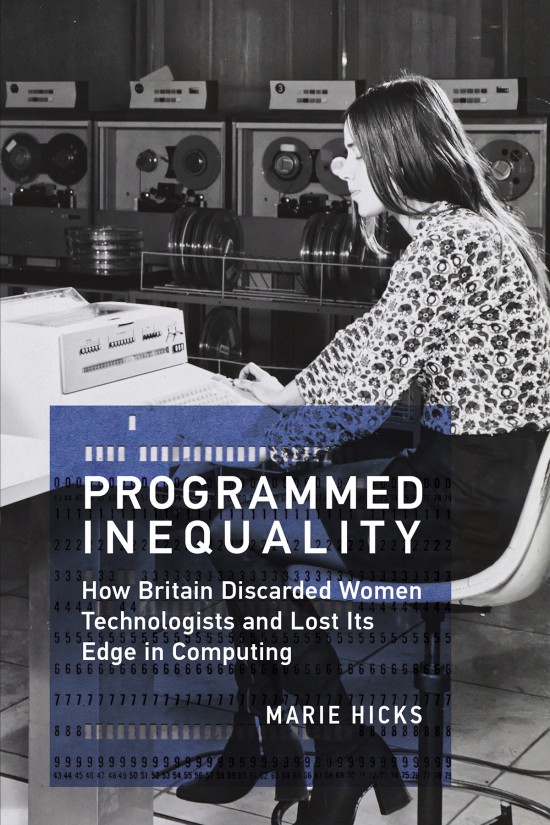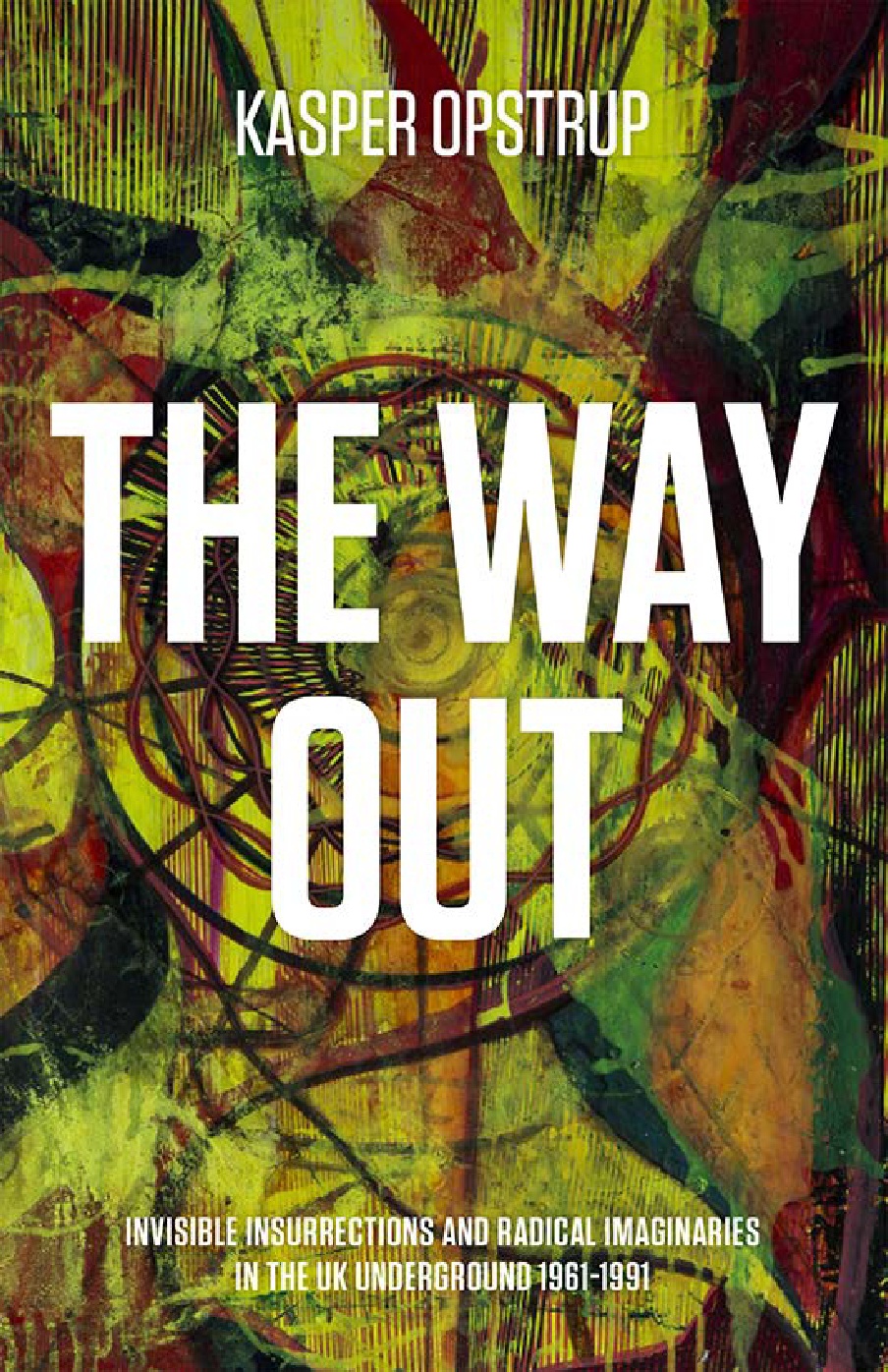Marie Hicks: Programmed Inequality: How Britain Discarded Women Technologists and Lost Its Edge in Computing (2017)
Filed under book | Tags: · computing, history of computing, history of technology, technology, united kingdom, women

“How Britain lost its early dominance in computing by systematically discriminating against its most qualified workers: women.
In 1944, Britain led the world in electronic computing. By 1974, the British computer industry was all but extinct. What happened in the intervening thirty years holds lessons for all postindustrial superpowers. As Britain struggled to use technology to retain its global power, the nation’s inability to manage its technical labor force hobbled its transition into the information age.
In Programmed Inequality, Marie Hicks explores the story of labor feminization and gendered technocracy that undercut British efforts to computerize. That failure sprang from the government’s systematic neglect of its largest trained technical workforce simply because they were women. Women were a hidden engine of growth in high technology from World War II to the 1960s. As computing experienced a gender flip, becoming male-identified in the 1960s and 1970s, labor problems grew into structural ones and gender discrimination caused the nation’s largest computer user—the civil service and sprawling public sector—to make decisions that were disastrous for the British computer industry and the nation as a whole.
Drawing on recently opened government files, personal interviews, and the archives of major British computer companies, Programmed Inequality takes aim at the fiction of technological meritocracy. Hicks explains why, even today, possessing technical skill is not enough to ensure that women will rise to the top in science and technology fields. Programmed Inequality shows how the disappearance of women from the field had grave macroeconomic consequences for Britain, and why the United States risks repeating those errors in the twenty-first century.”
Publisher MIT Press, 2017
ISBN 9780262035545, 0262035545
x+342 pages
Reviews: Ksenia Tatarchenko (British Journal for the History of Science, 2017), Janet Abbate (IEEE Annals of the History of Computing, 2017), Lianne Gutcher (The National, 2017), Dominic Lenton (E&T, 2018), John Gilbey (Times Higher Education), Christophe J. Phillips (Isis, 2018), Mark J. Crowley (History, 2018), Megan Finn (Information & Culture, 2018).
HTML, PDF (removed on 2018-10-26 upon request from publisher)
Comment (0)Interdisciplinary Science Reviews 42(1-2): The Experimental Generation (2017)
Filed under journal | Tags: · 1950s, 1960s, art and science, art history, experimental art, technology, united kingdom

“This special double issue of ISR came out of the conference The experimental generation: networks of interdisciplinary praxis in post war British art (1950–1970) we organized together in 2014, exploring an apparent convergence of interest in art and science around the notion of social responsibility in the 1960s. …
It is rarely recognized that Cambridge was something of a hotbed of interdisciplinary exploration in the 1960s. Within this issue we seek to bring some of the leading figures behind this into the foreground, from the Language Research Unit led by Margaret Masterman to the Centre for Land Use and Built Form Studies created by Leslie Martin in the Architecture Department. Cambridge was, after all, where C.P. Snow (re)ignited the ‘Two Cultures’ debate in 1959; where two key figures in cybernetics and systems theory, Gordon Pask and Robin McKinnon-Wood, met as undergraduates, founded their company ‘System Research’ and developed their first early computers. Ian Sommerville, the precocious mathematician who invented the ‘Dreamachine’ with Bryon Gysin was an undergraduate at Trinity College when he invited Gustav Metzger to give his first public lecture/demonstration on Auto-Destructive Art for the Heretics Society in 1960. In 1964, St Catharine’s College, Cambridge, played host to the ‘First International Exhibition of Concrete, Kinetic and Phonic Poetry’ initiated by a young academic in the English department, Michael Weaver who gathered together over 60 works by poets and artists from 14 countries for a week’s exhibition in a Cambridge college. He worked closely with Reg Gadney, Philip Steadman and Stephen Bann who co-edited a formative issue of IMAGE magazine, on Kinetic Art: Concrete Poetry in November 1964. Steadman, Weaver and Bann went on to launch Form (1966–1969).
As a founder member of the Cambridge University Artists Group, Gadney was instrumental in spreading knowledge of Kinetic Art methods and techniques through articles in the student magazine Granta as well as the London Magazine. In 1965 Metzger was invited back to Cambridge to deliver his ‘Chemical Revolution in Art’ lecture attended by Bann, Gadney and Steadman. In his article for this journal Professor Stephen Bann looks back at the art and ideas that informed his book Experimental Painting, published in 1970, which took developments in art of the previous decade as its subject.
This issue spotlights a period that is still within living memory, and still reverberates today. In encouraging such a diversity of articles we have followed our instincts as curators rather than historians. We have gathered together a constellation of voices, from pioneers to emerging scholars, in order to encourage and facilitate unanticipated connections.” (from the Introduction)
Edited by Bronać Ferran and Elizabeth Fisher
Publisher Institute of Materials, Minerals & Mining, London, 2017
ISSN 0308-0188
224 pages
PDF (33 MB)
Comment (0)Kasper Opstrup: The Way Out: Invisible Insurrections and Radical Imaginaries in the UK Underground, 1961-1991 (2017)
Filed under book | Tags: · 1960s, 1970s, 1980s, aesthetics, avant-garde, counterculture, cultural history, education, london, mysticism, politics, protest, social movements, united kingdom

“A counterculture history of art and experimental politics that turns the world inside out
The Way Out examines the radical political and hedonist imaginaries of the experimental fringes of the UK Underground from 1961 to 1991. By examining the relations between collective and collaborative practices with an explicit agenda of cultural revolution, Kasper Opstrup charts a hidden history of experiments with cultural engineering, expanding current discussions of art, medias, politics, radical education and the occult revival. Even though the theatres of operation have changed with the rise of the Internet and a globalised finance economy, these imaginaries still raise questions that speak directly to the present.
Here we encounter a series of figures – including Alexander Trocchi, R. D. Laing, Joseph Berke, Brion Gysin, William Burroughs and Genesis P-Orridge – that blurred the lines between inner and outer, the invisible and the material. Four singular forms of speculative techniques for igniting an invisible insurrection with cultural means make up the central case studies: the sigma project, London Anti-University, Academy 23 and thee Temple ov Psychick Youth.
Contained within these imaginaries is a new type of action university: a communal affair that would improvise a new type of social relation into existence by de-programming and de-conditioning us without any blueprints for the future besides to make it happen. Instead of being turned upside down, the world was to be changed from the inside out.”
Publisher Minor Compositions, Wivenhoe, 2017
ISBN 9781570273285
252 pages

